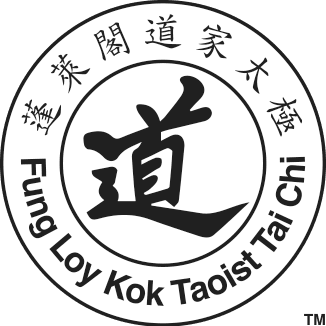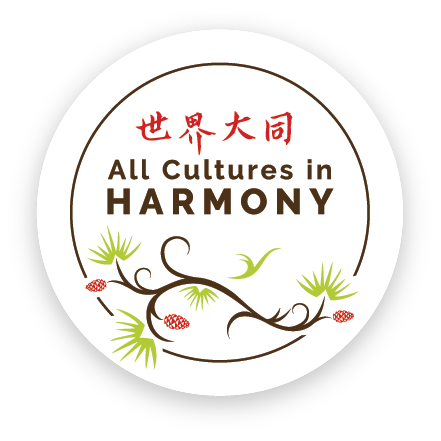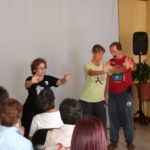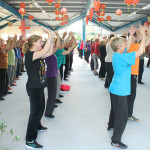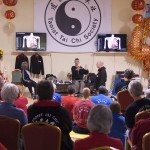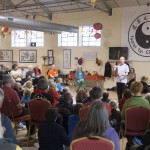The Dragon's Head Blog
Anatomía y Fisiología
Osteoporosis y la práctica de Taoist Tai Chi®
Did you know that Taoist Tai Chi® arts can straighten out severely damaged osteoporotic vertebrae without the aid of analgesic or prescription drugs? These two X-rays show: left the spine in 2016 and on the right 2015. 2016 shows the expansion created by straightening things out so now I can sing again as the air […]
Exploring Physiology and Taoist Tai Chi® Arts in Costa Rica
Recently in the centre in Heredia, Costa Rica we had the pleasant opportunity to explore the subject of physiology and Taoist Tai Chi® arts through a series of five illustrated talks. This series of sessions has given us a greater insight into the depth of the arts and motivated the participants to practice more, but […]
Saturday Nov 26: The Tiger’s Mouth in Italy
On Saturday November 26, 2016 “The Tiger’s Mouth” took place, an event that was held in our clubhouse in Florence and was attended by members from all Italian branches, non-members, doctors and health professionals. It was an important opportunity for all to share experiences and information. Gianluigi Occhipinti, rheumatologist, although not be present, made available […]
Strong leg muscles for a fit brain!
The brains and bodies of identical twins were compared over ten years and for the first time, a connection has been found between power in the lower limbs and healthy cognitive ageing. So, if you need a little extra motivation to get up and do your danyu’s (or any of our moves!) ….. Read article published on […]
Edinburgh Anatomy part 2
As the Weekend program got under way, our 150 participants explored their insides with the help of an Essential Anatomy app presentation, during which we had a real-life demonstration of the the importance of good posture on the position of our organs. Please don’t think we spent all week sitting around watching TV!
Edinburgh anatomy session
Continuing our search for an understanding of the universe, and for simplicity, Marsha spoke about the effects of Taoist Tai Chi® arts effects on our anatomy using a skeleton as a model of the body; Steve spoke of the same using a tea tray and a practise sword as a model of the skeleton.
Taoist Tai Chi® Arts Help Frozen Shoulder
Around April 2014 I developed a frozen right shoulder. Essentially that’s a tightening of the underside of the capsule of the shoulder – in your armpit, so to speak. There are actually changes in the cells of the capsule tissue for a period of about eighteen months (if you are unlucky, it’s longer). The classical […]
Note on Anatomy and Physiology: Suppleness of Focus
We’ve concentrated a lot lately on the upper limbs. We’ve emphasized that, because the hands form one end of a number of continuities running through the body, their proper use has a significant impact on all our movements. But the hands, although intimately connected to the centre, are situated out in the periphery. While they […]
Notes on Anatomy and Physiology: Slings at the Front, Slings at the Back
For awhile now, we’ve been delineating hand to foot continuities that run throughout the body, providing strength, flexibility and a more developed sense of one’s body in space as they unfold. These patterns of uninterrupted flow, created by sequences of muscle, tendon, fascia and bone, come and go with movement. We saw, last time, how motion […]
Notes on Anatomy and Physiology: The Hand and The Tiger’s Mouth
Last time, we looked at how the bones of the elbow-forearm complex are designed so that the elbow bends and the hand turns. To better understand the influence of the hand and elbow on the strength and balance of our entire structure, we need to consider the ties binding the components of the upper limb […]
Notes on Anatomy and Physiology: One Big Tendon
In an earlier article, it was mentioned that we are often asked in class to open Tiger’s Mouth, bring fingertips up, drop elbow, turn wrist or send out the hands. Why is that? What role do the upper limbs play in learning our art? How do they contribute to the balance and strength of our […]
Notes on Anatomy and Physiology: The Elbow-Forearm Complex
In practicing our art, one of the things we discover is the steady rhythm of the body as it turns up and then down. Surprisingly, we also learn that attending to the placement of the hand and elbow helps us acquire that rhythm. We will focus today on the elbow-forearm complex, its anatomy and its […]
Testimonial: Research Proves Experience with Fibromyalgia
As reported in the New York Times and US News & World Report, a small but significant new study published in the New England Journal of Medicine shows positive results in pain relief from regular practice of tai chi for people suffering from fibromyalgia. One of our members in Australia has personally experienced the positive […]
Notes on Anatomy and Physiology: Learning with the Hand and Elbow
Taoist Tai Chi® arts introduce a way of moving that is novel for all students. Because the focus is on balance in all its dimensions, we develop over time a newfound sense of comfort and ease as we practice the 108 moves of the set. It feels as if we are learning to move the […]
Testimonial: Full Range of Motion Regained in Spine
In celebration of our 40th anniversary, we asked members around the world to share how the Taoist Tai Chi® arts have affected their lives. “When I started practicing the Taoist Tai Chi® arts I had extremely restricted head movement due to calcification of my upper spine. Within four months I had regained full range of […]
Notes on Anatomy and Physiology: More On The Ties That Bind
In the tor yu, the hands draw out the spine – as the body sends out the hands. To better understand this interplay, let’s examine further the whole body continuities that tether the upper limbs to the rest of the body. You recall that last time we examined the lines of pull created by the […]
Notes on Anatomy and Physiology: The Intervertebral Discs
The intervertebral discs play a key role in the life of the healthy spine. Their degeneration is a frequent cause of pain and disability, and a herniated lumbar disc represents the most common reason adults end up with back surgery. And many students first come to the Taoist Tai Chi® arts because of persistent back pain. […]
Notes on Anatomy and Physiology: Slings at the Front, Slings at the Back
For awhile now, we’ve been delineating hand to foot continuities that run throughout the body, providing strength, flexibility and a more developed sense of one’s body in space as they unfold. These patterns of uninterrupted flow, created by sequences of muscle, tendon, fascia and bone, come and go with movement. We saw, last time, how motion […]
Notes on Anatomy and Physiology: Function of the Thoracolumbar Fascia, Part 2
In the last note, we learned that bending forward with the low back in Step Up and Punch or Push Needle to Sea Bottom reverses the normal lumbar lordosis, lengthens the thoracolumbar fascia, tautens its fibers and stores elastic energy. We saw that simply letting the weight settle in the don yu , tor yu and set causes […]
Notes on Anatomy and Physiology: Getting the Feel of Tensegrity
We’ve spoken recently of how the body makes use of tensegrity to help hold itself together. We stretch out our soft tissues and they resist further expansion and create a sea of continuous tension that tugs on and supports the bones suspended within it. Soft tissue and bone working together. Because the soft tissues resist […]
Mostrando resultados
